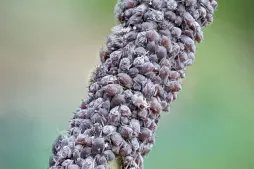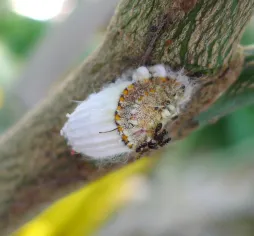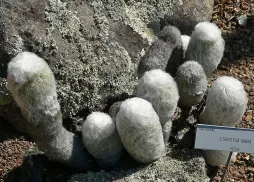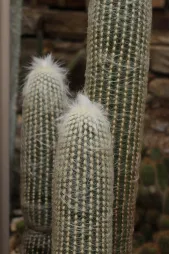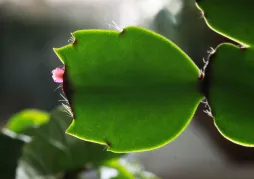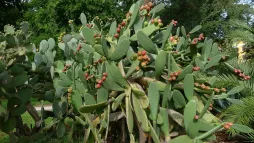Espostoa melanostele, a downy cactus
Don't be fooled by appearances! Behind its soft fleece, Espostoa melanostele conceals sharp spines. A way for this Peruvian cactus to protect itself from predators and the Peruvian climate.
How to recognize Espostoa melanostele?
Smaller than woolly Cactus (Espostoa lanata), Espostoa melanostele is only four meters tall in its natural environment. There is also a dwarf variety, Espostoa nana, which grows to no more than two meters. After a few years, this candle cactus branches out and produces branches at its base.
The green stem has 25 ribs and can reach a diameter of 15 cm. It bears areoles from which yellow bristles and prickles emerge. The central stem, like the branches, is covered with white hairs. They protect the plant from the sun's heat during the day and from the cold at night. They also enable it to retain moisture.
Older plants flower in summer. White flowers five centimetres in diameter appear on the ribs.
These then turn into yellow or red pear-shaped fruits.
Espostoa melanostele is not toxic. However, its sharp spines can cause injury. Keep your cactus out of reach of small children and pets. Remember to wear gloves when repotting your plant.
Our maintenance tips
Your plant needs watering in winter only when the temperature is above 18°C. If it spends the off-season outdoors or in an unheated greenhouse, one watering every two months will be more than enough.
Watering
Espostoa melanostele are the enemy of excess water. Before giving your specimen a drink, always make sure the soil is at least five centimetres dry.
Like many plants, the plant prefers rainwater. But it's fine with tap water. Just make sure it's at room temperature.
Remove any water stagnating in the cup under the pot. It can rot the roots.
Spray
Your espostoa melanostele hates wet foliage. You must not mist the plant.
Repotting
In spring, transfer your Espostoa melanostele subsp. Melanostele to a larger pot, so that it can continue to grow.
In a pierced pot, pour a layer of well-draining substrate. You can use commercially available potting soil for cacti and succulents, or make your own growing medium by mixing ordinary potting soil and sand.
Plant your Espostoa melanostele in the center and add soil. Be careful not to bury the leaves, and leave a watering trough.
Water generously to encourage rooting and expel air bubbles.
Fertilization
You can stimulate the development of your plant during its growth phase, in spring and summer, with fertilizer.
You don't have to fertilize your plant to make it grow. However, if you want to stimulate its growth, you can give itfertilizer for cacti and succulents.
Plantation
Once the last spring frosts have passed, you can plant.
Select a sunny location. If possible, choose a slope or embankment: water will run off more easily and roots will be less likely to rot.
Dig a hole the size of the root ball. Plant your Espostoa melanostele subsp. Melanostele in the middle. Fill with a mixture of potting soil and sand. Pack by hand and water to eliminate air pockets.
Cutting
Cutting is carried out during the strong growth phase, generally in spring and early summer.
After a few years, your Espostoa melanostele produces shoots. You can divide them to multiply the plant.
Once the plant has been dug up, separate one of the shoots, with its roots. Beware of thorns! Remember to wear gloves when handling your Espostoa melanostele.
Pour a light, well-drained substrate into a pierced pot. You can use potting soil for cacti and succulents or a mixture of ordinary potting soil and sand.
Plant your cutting, burying the first two centimetres in the soil. Place the cup in partial shade.
Wait ten to fifteen days for the cuttings to root before watering.
Diseases / Threats
Information
| Family | Cactaceae - Cactaceae |
| Type | Espostoa - Espostoa |
| Species | Espostoa melanostele - Espostoa melanostele |
| Lifecycle | Perennial |
| Foliage | Evergreen |
| Exposure | |
| Substrat | |
| Planting methods |
Open ground In pots In tubs |
| Category | |
| Tag |
Beginner |
| Origin |
South America |
| Hardiness (USDA) | 10b |
| Leaf color |
|
| Flower color |
|
| Fruit colors |
|
Discover plants from the same family












